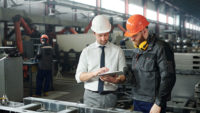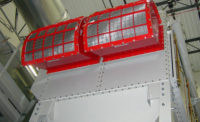Most Americans spend close to 90 percent of their time indoors, so creating environments that are safer, cleaner and built with wellness in mind is more important than ever. But finding cost-effective and practical solutions that prove a real return on investment and offer true safety benefits to the public can be difficult.
Plus, with brighter lights and “caution: slippery when wet” signs popping up as simple solutions to a bigger problem, it’s easy to make quick decisions based on budget constraints or design choices.
But practical and cost-effective ways to create safer spaces doesn’t have to require an overhaul to design plans or the inclusion of ineffective quick fixes. In fact, taking a look at existing infrastructure could be key to saving time, effort and most importantly, money in the long run.
Safety is not an afterthought
Protective flooring shouldn’t be a last-minute add-on or afterthought of design. More often than not, safety takes a back seat when it’s time to make real decisions about entrance flooring, even though the impact of a thoughtful system can be significant. By taking a second look at the role protective flooring—with mats and beyond—can play, you can design attractive spaces that operate more efficiently and work harder to keep people safer.
A carefully considered protective flooring solution can create safer spaces in two key ways: by aiding in the prevention of slips, trips and falls and improving the air quality of the building.
Preventing slips, trips and falls
According to the Consumer Product Safety Commission (CPSC), floors and flooring materials contribute directly to more than two million fall injuries each year. And they cost employers big, too. Compensation and medical costs associated with employee slip and fall accidents is approximately $70 billion annually, according to the National Safety Council.
Many building managers choose reusable mats as their only line of defense at the entrance, but a common cause of slips and falls is in fact mat movement. When used alone, mats provide flexibility but limited stability, simply because they rest on top of the flooring surface. The best protection for entrance and transition areas results when mats are incorporated into a more functional and holistic approach.
Another potential risk for slips and falls comes with problematic weather. Rain, sleet and snow is tracked in, creating saturated mats or slippery tiles and hard surface flooring options that are prime locations for accidents. Always take local weather into consideration when selecting an entrance flooring solution. Cities with heavier rain or more intense winters should consider a permanent system that works effectively through every season.
Improving air quality
A now 30-year-old study from the Environmental Protection Agency (EPA) found poor indoor air quality can cost the nation billions of dollars each year in lost productivity and medical care. Additionally, concentrations of some pollution indicators can be two to five times higher indoors compared to outdoors.
Everyday traffic in and out of buildings creates the perfect environment for dirt, debris and water to be tracked in through entrances and into the air, staying with people as they move throughout the building. The key to protecting your space from external debris and pollutants is a protective flooring solution that traps potentially harmful debris before it even has a chance to get into the air.
Your first line of defense
The good news? Integrating a permanent flooring entrance system is more than a comprehensive solution to a common problem -- it can have real effects on decreasing slips, trips and falls, improving air quality and propelling a building closer to meeting the WELL Building Standard. With the strength to withstand heavy foot traffic and easy maintenance, it’s the first line of defense that every building needs.
When evaluating a permanent entrance system, be sure to take three zones into consideration: outside, vestibules/airlocks and indoors. By adding protection outside, you can trap heavy dirt particles, snow or salt before a person even enters the building. Enclosed entrances can act as a second line of defense to collect debris and moisture while a flooring system throughout the primary areas inside, like lobbies, can absorb any remaining moisture and small particles. This three-zone system ensures complete protection throughout the entryway.
Take a second look at how hard your entrance flooring is working to keep your building safe. A proper, permanent entrance system will have immediate effects on reducing slips, trips and falls, improving air quality and in the long run, saving you time and money.






